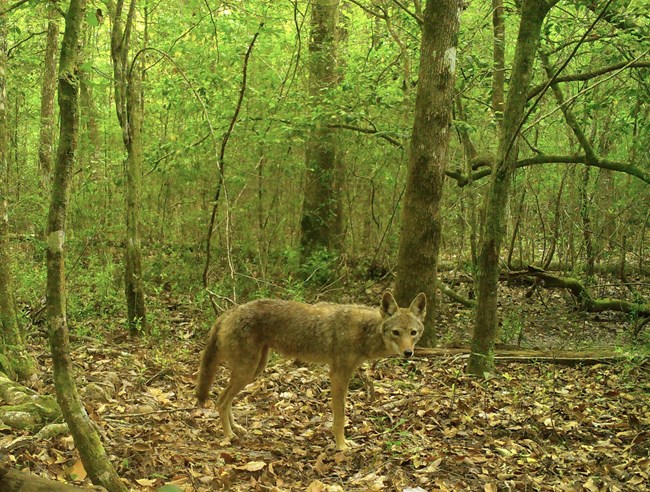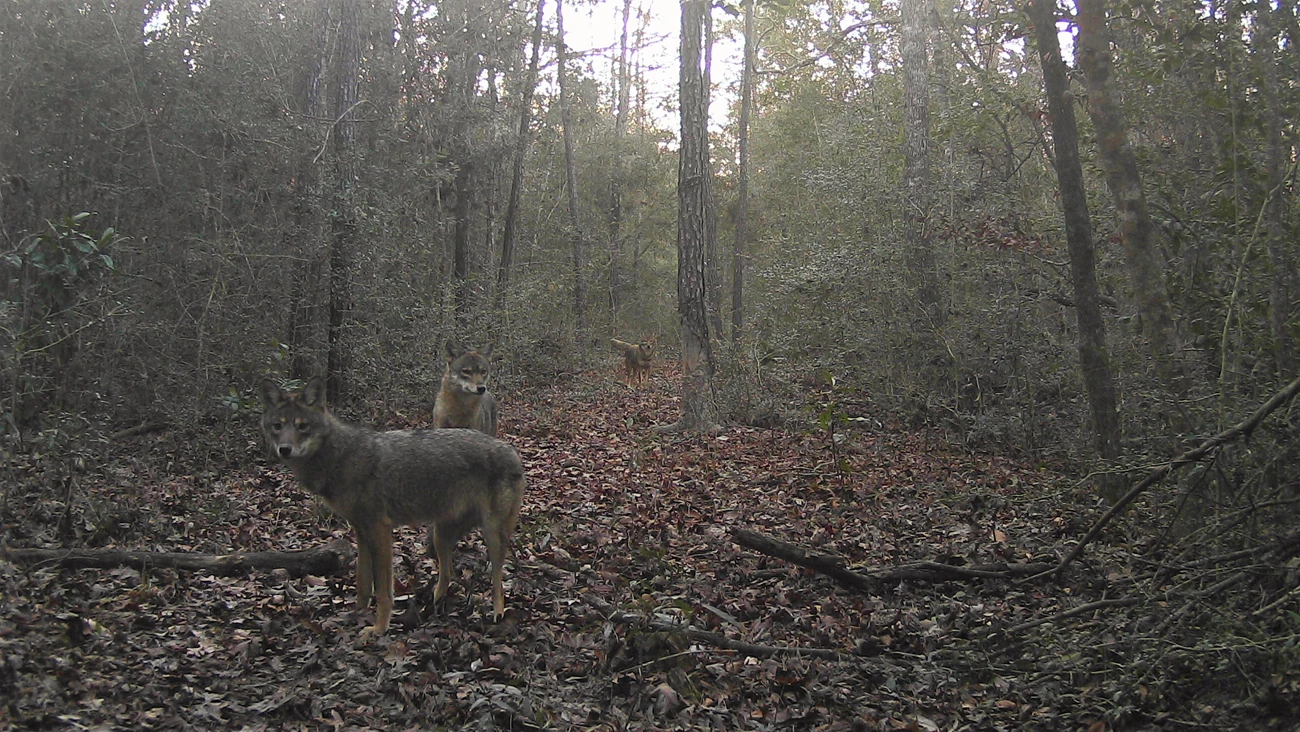
NPS Photo Canis latransCoyotes are widespread throughout the United States and are known for being very adaptable creatures. They can be solitary and can also live in small groups or even in larger packs. They eat everything from plants to large prey such as deer. Coyotes that live in larger groups tend to hunt larger prey more often, whereas solitary coyotes are more likely to go after small prey such as rodents. They have also been known to rummage through trash cans and dumpsters, one reason why they are still able to survive in urban areas that many larger carnivores avoid. Did You Know?

NPS Photo Bekoff, M., & Wells, M. C. (1986). Social ecology and behavior of coyotes. Advances in the Study of Behavior, 16, 251-338.
Pence, D. B., & Windberg, L. A. (1994). Impact of a sarcoptic mange epizootic on a coyote population. The Journal of Wildlife Management, 624-633. Soulé, M. E., Bolger, D. T., Alberts, A. C., Wrights, J., Sorice, M., & Hill, S. (1988). Reconstructed dynamics of rapid extinctions of chaparral‐requiring birds in urban habitat islands. Conservation Biology, 2(1), 75-92. Wayne, R. K., & Jenks, S. M. (1991). Mitochondrial DNA analysis implying extensive hybridization of the endangered red wolf Canis rufus. Nature, 351(6327), 565-568. Coyote Research in the National Parks |
Last updated: February 8, 2021
